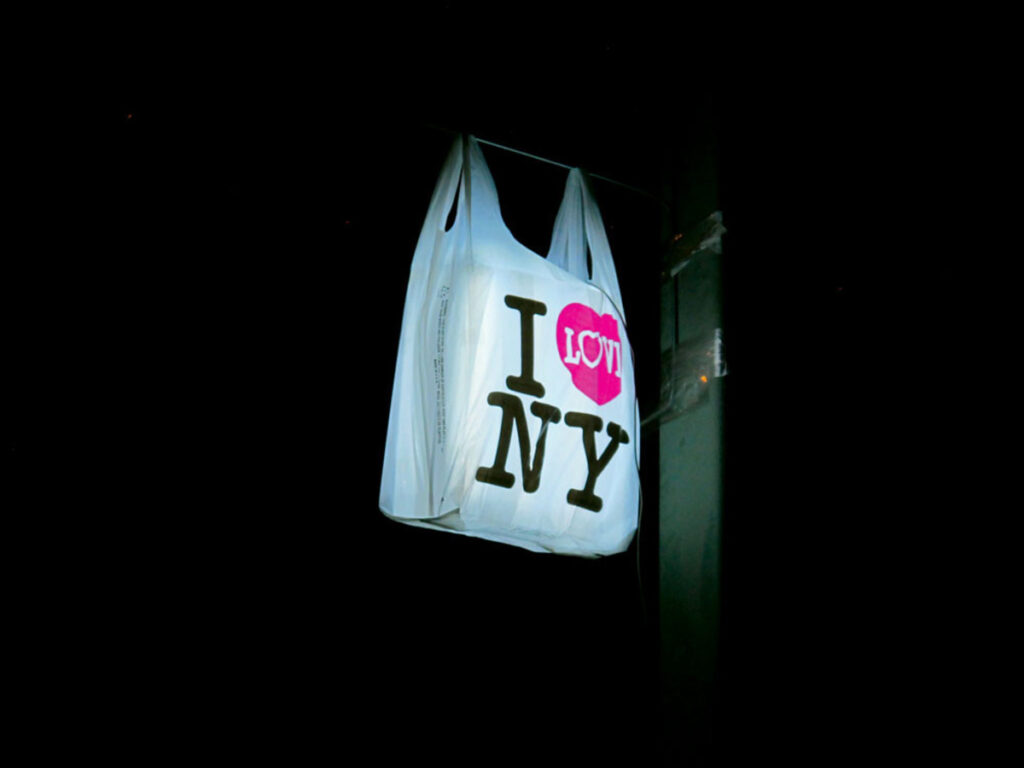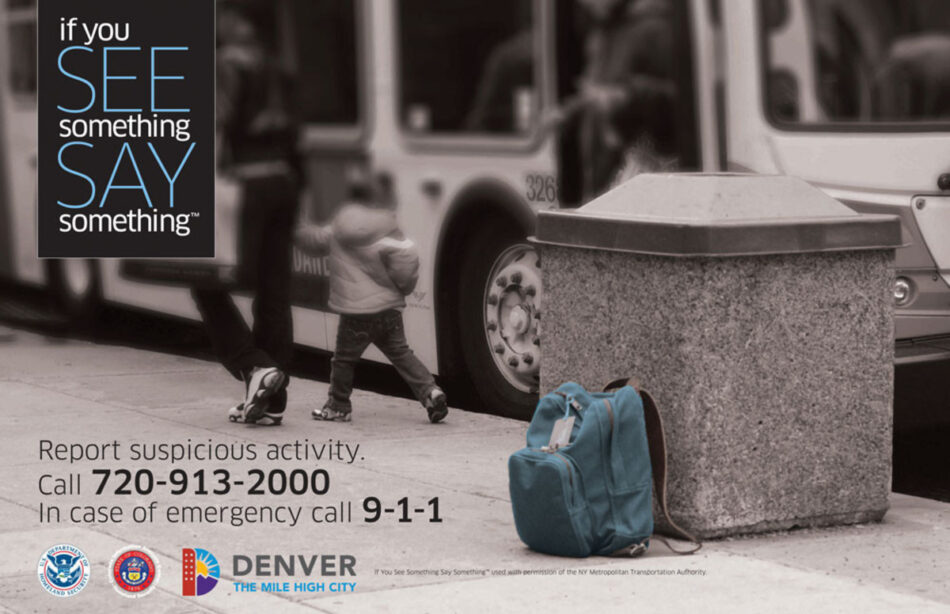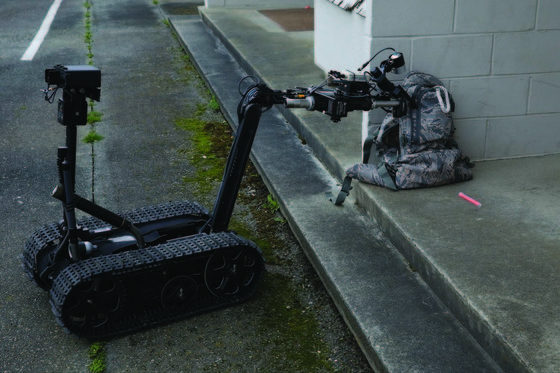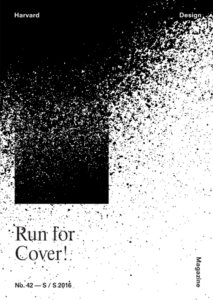Suspunk: Thinking with Suspicious Packages
Report suspicious activity. If you see something, say something. Do not leave bags unattended. These are the instructions for acceptable cohabitation in the secure city. But objects mediate between bodies. People are allowed to put materials into new and unexpected configurations, as long as such arrangements do not inspire fear or dread.
Objects in space must have an author or an owner who speaks for them, lest they leave interpretation up to undue speculation. Unknowability is insecurity.1 However, the alarmist idea of the “suspicious package” may unlock a different politics of urban life, one premised on sensuous materialism rather than security theater.2
Suspicious packages, or “suspacks,” as we have started to refer to them, are perplexing.3 They are material things that inspire dark thoughts in urban subjects, far surpassing what can be deduced from their ordinary thingness. Suspended in a state of possibility, suspacks flood the synapses with mental triggers like few other creations can. In other words, the suspack is matter in semiotic flux. A suspack is not (yet) a bomb or weaponized debris in motion, but neither is it a plain box. If it were a bomb, we would call it a bomb. If it were poison, we would label it with warnings. If it were a delivery, it would belong somewhere else—on a truck en route to its destination, say. But sometimes (most of the time, in fact), a box is just a box and an unattended suitcase is simply luggage that was misplaced. Suspacks are a little-understood entity—not quite a fixed category or a marketable commodity—that defies the certitudes of designed products.

The odds of finding a harmful device among those that are identified as suspicious must be, as a figure of speech, one in a million; exact figures, assuming they exist, are not made public. This is not to dismiss the fact that sometimes individuals commit acts of violence, but only to bring attention to how infrequent these acts are. Police killings and gun violence take thousands of lives a year in the United States, yet proportionately receive scant government concern. By some estimates, security forces respond to suspacks 4,000 times a year in New York City alone, feeding a cottage industry in algorithmic surveillance, testing devices, and bomb disposal robots.4 Suspacks are comically unsuspicious. A suspack is suspicious up until the moment it isn’t; that is, up until the instant its actual danger is determined. Suspacks are an everyday occurrence.
But comparisons are inherently problematic, as if one has to disavow all violence in order to have a rational discussion about suspicion and objects. In such a way, by questioning the perceived threat of suspacks, one comes to validate the authorities’ own paradigms of security, creating separate designations for suspacks that are “safe” versus “dangerous.” The point, instead, is to not reduce suspacks to a single frozen identification and thus restrict the imaginative assembly of materials to a limited menu of safety. (Safety for whom?) In addition, by discursively returning to the suspack as a potential weapon, however unlikely it is to be one, and reinscribing it with a latent capacity to do damage, even if infrequent, we give away our right to get to know these everyday objects intimately; we yield to the state the power to map and track these objects. Thus, the state produces a formal knowledge of geometries and matter while retaining control over the definitions of legality and illegality.5 To wit, while most of the United States liberally embraces the “open carry” of handguns, the nation obsessively restricts the design of insurgent objects of any sort.
Suspack beyond Design
Can design deal with the suspack? In a time of ersatz corporate startups, suspacks rise to the true definition of “disruption” (a word made so banal by Silicon Valley), changing social behavior around them. And yet, design appears to take little notice of the suspack’s lessons—from the intricacies of material assembly to the general aesthetics of these objects. What if, to draw from Jane Bennett, we regarded suspacks less as fixed things and more as a matter with a vibrancy that connects different bodies in the political ecology of a city?6 For many designers, it’s enough to propose a smartphone app that lets people report suspacks to authorities. But ideas like this one mean eliminating the suspack instead of thinking with it, allowing the object to insinuate different relations
between humans and things.
The suspack poses a different magnitude and order of objects than the truisms of efficiency—the finalized, user-tested, prototyped, 3D-modeled certainties—in design. It defies the rationalities of design as practiced in business and commerce. But to assert the suspack’s fluidity is not enough; it challenges the very basis of material performance. The suspack is an unstable assemblage that questions program, function, and construction. Or, to put it more accurately: the suspack goes in other unpermitted directions, suggesting surprising geographical markings of the city, odd combinations of pieces that defy given instructions, and unexpected readings attached to the appearance of objects. The suspack might even define biological or ecological relationships of energy and waste that remain unimagined in design practice today.
However, to assert that the suspack breaks with certainties is to think that the suspack first encoded a purpose and then defied it. Instead, the suspack doesn’t have a use for purpose, program, or function. The suspack destabilizes assumptions of linear or direct conclusions drawn from methodical research questions. The suspack does not give a fuck.
The radical negation of the suspack flips a city’s expectations. In a city, matter must behave in certain ways. It must show up at given times, and stay in its place when it is not needed. Matter is expected to function according to the business-dictated schedules and the temporal frames of the urban. But the suspack defies the just-in-time expectations of life in the city (e.g., Amazon Prime). The material aberration and misfit location of the suspack charges it with volatile political possibilities that can alter urban conscience. Put a different way: if the city has a political need for the suspicion of packages, the package in turn might have no use for the city. However, this opposition between suspack and city has its own problems. Yes, there may be a negation of the pace and circulation of the urban encoded into the unexpected appearance of the suspack, but the suspack itself has no inherent need for idealized, dualist separations between place and object.

Suspicious tactics? Hardly.
Messy, greasy, stained, ugly, and poorly assembled. Streamlined, polished, and tight. Almost anything can be a suspicious package—as long as it is in the wrong place at the wrong time. In 2012, New York City police arrested designer Takeshi Miyakawa, a former employee at Rafael Viñoly’s architecture firm, for installing “I ❤ NY” bags that contained LED lights and cables in trees.7 A neighbor reported the lo-fi installation as a suspack, and suddenly Bedford Avenue was evacuated. Miyakawa was charged with reckless endangerment, criminal nuisance, and planting a “false bomb,” and he served five days of a 30-day jail sentence at Rikers Island.8 In a New York Times article, Viñoly defended Miyakawa but added, “I can’t build a building without getting a permit. All he needed to do was ask for permission.”9 Viñoly’s ill-timed statement was objectionable—scolding Miyakawa in public after the artist had been imprisoned and subjected to involuntary examinations. At the same time, Viñoly reveals an architect’s conformist thinking that passively accepts legislation of the time and place of artistic speech.

Urban design practices that propagate the tactical and improvised have an oddly aloof attitude toward the suspack. They pretend not to know about them. The suspack is the law’s domain, it would seem, not the designer’s (as if these two entities operated independently of each other). But suspacks have a capacity to instigate action; they change the pace and tempo of the city. All at once, everything slows down and the police clear an area; an unusual quiet sets in. At the same time, the security apparatus moves at high speed through the city, horns blaring, to meet the chilling threat. The suspack attunes urban dwellers to a heightened sense of shared space, suddenly made aware of the movement of air particles and the details of sounds that might give a last-second warning to run. Suspicious packages can move the city in ways urbanists only fantasize about.
Parklets, temporary urban furniture, converted shipping containers, parametric pavilions—these now-common features of public space design produce banal spectacles in the guise of activation. The suspack actually performs the urban promises of the tactical—and without even trying. The suspack stores in its reserves the latency of urban life that fear keeps at bay. If we hold onto the suspack for a fleeting instant of its brief, insurgent existence, we can examine contemporary urbanism through a unique prism. The promises of influential and political urban players—sporting events, exclusive parties, shopping districts, business improvement zones—paint a debased, but accurate, portrait of the failure of liberal urban democracy to create an inclusive and participatory society. But without the suspack chase, like a Benny Hill skit, the liberal urban order would be unthinkable. The many formulations of tactical, informal, spontaneous, and otherwise neoliberal urbanisms could not exist without the persecution of the suspicious. Without the shock troops and their specialized anti-suspack technologies, tactical urbanism would not be viable for the neoliberal city. It would have no uniqueness and no separate expertise to speak of. For a fleeting moment, the suspack reveals the totalitarian spirit costumed, for example, as MoMA PS1: Young Architects’ installations.
The suspack is an entity that exceeds the capacities of design as it is practiced today. It would be tragic if design absorbed the suspack, supposing it even could. Let’s play an admittedly silly mental game for a moment. What if mayors began to openly index the incidents of reported suspacks? (For the general public, no one is keeping count of suspicious package reports, although some agencies are said to do so out of sight.) Imagine what would happen if cities created a Richard Florida-like SusPack Index; if cities celebrated, rather than feared, the suspack? What if the SusPack Index identified the excitement of desirable creative cities according to their frequency of suspicious package reports? This would, of course, be a nightmare. It is also an absurdity—yet an absurdity that illustrates how incongruent the suspack is with accustomed spatial governance of the urban.
The suspack conjures an abyss that professional design cannot face. Let us make some provisional conclusions. The suspack insinuates a relationship between humans and materials that neither relies on nor rejects mastery or detail. It contains material significations that remain secret, impenetrable to the gaze that scrutinizes with suspicion. Suspacks imply that design can be uncertain and unfinished, hovering with changing conditions of possibility. Furthermore, suspacks have a politics of cohabitation in which material properties are emergent, rather than determined by judicial fiat.
In its relationship to the city around it, the suspack performs a critique of urbanism as a collection of professions that shape cities, and as a way of life that makes no room for the unpredictable. It is easier for urbanism to imagine a city that continues to sweep up millions of suspacks at enormous human and economic costs than a city that abolishes the apparatus of security altogether. In contrast, if we were to think with suspacks, we might discover pathways in which making cannot be instantly categorized into the definable knowledge that underlies what the state uses to establish suspicion. The suspack insinuates a poiesis full of imaginative exchanges between matter and the world around it.
(New York: Routledge, 2014), 187–203.
2 See Joseph Masco, The Theater of Operations: National Security Affect from the Cold War to the War on Terror (Durham, NC: Duke University Press, 2014); Louise Amoore, The Politics of Possibility: Risk and Security Beyond Probability (Durham, NC: Duke University Press, 2013). 3 We, as in the three authors of this piece, work on a number of projects together as the Demilit collective. This text comes from a project on the “urban security cloud,” which uses walks, sounds, and writing to examine the effects of infrastructure and surveillance on cities. 4 “On an average day, the NYPD receives nearly 100 reports of a suspicious package. Last year, there were more than 4,000 such reports.” Associated Press, “Police Arrest Artist Setting Up ‘I Love NY’ Work,” WNYC, May 23, 2012, http://www.wnyc.org/story/211808-police-arrest-artist-setting-i-love-ny-work/. 5 See Michel Foucault, Lectures on the Will to Know: Lectures at the College De France, 1970–1971, and Oedipal Knowledge, ed. Daniel Defert, trans. Graham Burchell (New York: Picador, 2014). 6 We take heed of the mandate Bennett lays down: “I try to bear witness to the vital materialities that flow through and around us.” Jane Bennett, Vibrant Matter: A Political Ecology of Things (Durham, NC: Duke University Press, 2010), x. 7 Meghan Barr, “Police Arrest Artist Setting Up ‘I Love NY’ Work,” Salon, May 21, 2012, http://www.salon.com/2012/05/21/police_arrest_artist_setting_up_i_love_ny_work/. 8 Penelope Green, “Designer Takeshi Miyakawa Returns From Rikers Island,” New York Times, June 6, 2012, http://www.nytimes.com/2012/06/07/garden/designer-takeshi-miyakawa-returns-from-rikers-island.html. 9 Ibid.Javier Arbona is a geographer and a Chancellor’s Postdoctoral Fellow in American Studies at the University of California at Davis. He is at work on a manuscript called The City of Radical Memory: Spaces of Home Front Radicalism and Repression in the San Francisco Bay Area. He cofounded DEMILIT, a collaboration focused on walking, exploring, listening, and experimenting, with Bryan Finoki and Nick Sowers, in 2010.
Bryan Finoki is an independent writer and artist based in San Francisco. His written work has appeared in Design Observer, Domus, GOOD, OpenDemocracy, Triple Canopy, and Volume, among other publications. In addition to projects with DEMILIT, he experiments with notions of place, memory, and the sonic imagination in virtual audio environments in collaboration with Sowers, under the name 52-Blue.
Nick Sowers is a practicing architect based in the San Francisco Bay Area. His design work has been published in Architectural Record, frieze, and Design Observer. As an extension of his architectural work, Sowers researches the boundaries of sound and space with 52-Blue and DEMILIT, which he cofounded with Javier Arbona and Bryan Finoki.
